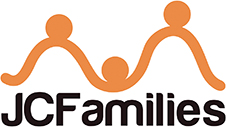For some kids, reading sucks. It’s difficult and boring and it never goes away. What I’ve noticed over the years is that very few children actually hate reading. Most of them just feel a lot of pressure to read at a certain level. Children as young as 2 can feel this kind of pressure when they struggle to understand rhyming, one of the fundamental skills for reading. It’s like almost drowning every time you attempt to learn how to swim. You want to yell at the water and anyone who tries to make you jump in it. The good news is, that once children master the smaller, but important, foundational reading skills, it helps them ease into the bigger more complex skills. So don’t worry if your child isn’t swimming with the rest of the group, meet him at whatever part of the pool he feels comfortable in and start from there. Below are some activities and book suggestions to help develop foundational reading skills at home.
*SUPER DUPER IMPORTANT*: These are meant to be short fun activities. Keep them that way. Avoid allowing your child to become frustrated. If you’re not having fun, they’re not having fun, so be silly when engaging in these activities, and if you’re not the silly type, try it! It may be uncomfortable at first, but if your child can struggle to learn a new skill you can struggle to explore a new part of yourself. Have fun!
Letters and sounds
(helps develop print concepts, specifically, recognizing letters of the alphabet, one of the common core foundational reading skills standards)
Alphabet manicure– Trace your hand and draw on some fingernails. Write the target letter on two of the fingers and random letters on the other three fingers. Using nail polish, have your child paint the fingernails of the fingers containing the target letter while saying its sound. For kids who are learning sounds in words, have them paint the fingernails of the fingers containing the word with the target sound, then use that word in a sentence.
Alphabet Yoga– Try making letter shapes with your body while saying the letter’s name and sound (i.e. put your back on the floor, legs in the air for the letter ‘L’, while saying “L says /l/”. For those of us who are not as flexible (my knees crack every time I attempt to sit on a floor) try sky writing. Take your pointer finger and draw the letter in the sky while saying its name and sound. Do this sitting next to your child so you’re both drawing the letter in the same direction.
Letter Lunch– When you make a PB&J sandwich or a cream cheese and lox, or use just about any kind of spreadable condiment, use a knife to draw a target letter into the condiment of choice. Ask your child to name the letter and its sound, before he/she is allowed to put the sandwich together. You could also use another food to create the letter, for example you could use raisins to form the target letter on top of an English muffin with cream cheese.
Rhyming
Rhyming is important because it teaches children that language is rhythmic and helps develop an attention to sounds in words, which will be needed later on for spelling. Here’s how you can introduce rhyming, tell your child that rhyming words sound the same at the end, then look at some pictures in a book with rhymes (Dr. Suess is great for this) and point them out in pairs (here’s a cat and here’s a bat, cat and bat rhyme). This intro doesn’t need to be that long. You can do this for 5 minutes a few times in a week.
The Name Game– Use your child’s name as inspiration for rhyming words (relaxin Jackson, busy Lissie). See how many both of you can come up with. You can also use names of family members and pets!
The Name Game (song)– You can sing this song using your child’s name or family member’s names (Maria pia bobia, banana fanna fo fia…)
Rhyming Aerobics – Tell your child that they must complete an aerobic activity each time you call out a pair of rhyming words (i.e. touch your toes when you hear rhyming words). If they complete the movement when the words don’t rhyme, the game starts all over again. Try taking turns with your child, see if they can come up with rhyming words and make you do all the exercise!
Suggested Books: Chicka Chicka Boom Boom by Bill Martin Jr; Goodnight, Goodnight, Construction Site by Duskey Rinker; There was an Old Lady Who Swallowed a Fly by Pam Adams; “I Can’t” Said the Ant by Polly Cameron; Horton Hears a Who by Dr. Seuss
Sound Isolation
Sound isolation is the ability to isolate and pronounce all of the phonemes in a word. This is one component of the Common Core Standard for phonological awareness. As with rhyming, and pretty much every new skill, it’s always fun for kids to learn by using their own names or items in their personal life. You can introduce sound isolation by “spelling” your child’s name using the phonemes (bu-eh-t-ee, Betty).
Loose Lips– This activity draws your child’s attention to the initial sound in a word and is a great way to introduce sound segmentation. While you are reading a book, ask your child to identify the correct word out of a choice of 3 (pointing to a cat- “is this a /sss/sat? nooooo. Is this a /mmm/ mat? Nooooo. Is this a /ccc/ cat? Yes! Cat starts with the sound /c/).
Silly Sentences– Pick your target sound and take turns coming up with sentences using words that begin with that same sound (silly Sarah sat on a slug). Whoever can come up with the most sentences or longest sentence wins!
Substitute Letters– Give your child a word, then substitute the first letter of the word for a new letter so that it becomes a new word. Have your child act out the new word (the word is ‘look’, replace the /l/ with a /b/, and show me what the new word is! the child should figure the new word out and pretend to read a book).
Emergent Reader Book Suggestions: The best emergent reader books have strong visual support, repetitive vocabulary, rhyme and rhythm. Here are a few that I think are good. You can also download some great emergent reader books for free at
- Brown Bear, Brown Bear, What Do You See? By Bill Martin Jr.
- Green Eggs and Ham by Dr. Suess
- Hop on Pop by Dr. Suess
- Goodnight Moon by Margaret Wise Brown
- Frog and Toad Are Friends by Arnold Lobel
Things that I’m into:
Food: I tried Roman Nose for the first time last night. It’s an Italian restaurant on Newark ave. My boyfriend and I split a pizza. It was pretty good (it would have been better if it was right out of the oven. We had to make a few stops before we could go home and eat it) I want to go back and try one of the pasta dishes, those looked really good. Any suggestions on what to try next time?
Makeup: Nude lip gloss has been my thing lately. It just makes your face look effortlessly fresh. The trick is to find the right nude gloss for your complexion. I used this guide to figure out which nude was right for me.
http://www.byrdie.com/best-nude-lipstick-for-skintone-2014/
Briana Evans, CCC-SLP is a licensed, certified speech language pathologist and owner of Speech Quest Speech and Language Therapy. She specializes in articulation, reading skills and early language development. She graduated from Columbia University with a Master’s degree in Speech Language Pathology. In addition, she is working toward certification in PROMPT therapy, a kinesthetic articulation technique. She currently provides in-home or at-school services for children and teens. She believes in a lifestyle approach to speech therapy, which includes embedding support throughout the client’s daily life.
Speechquestjcny.com
Twitter: @speech_quest








